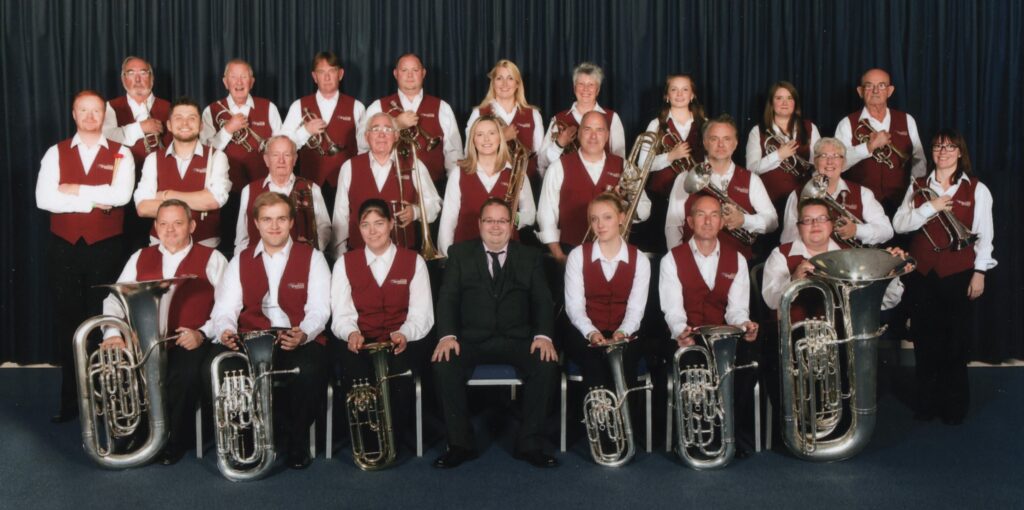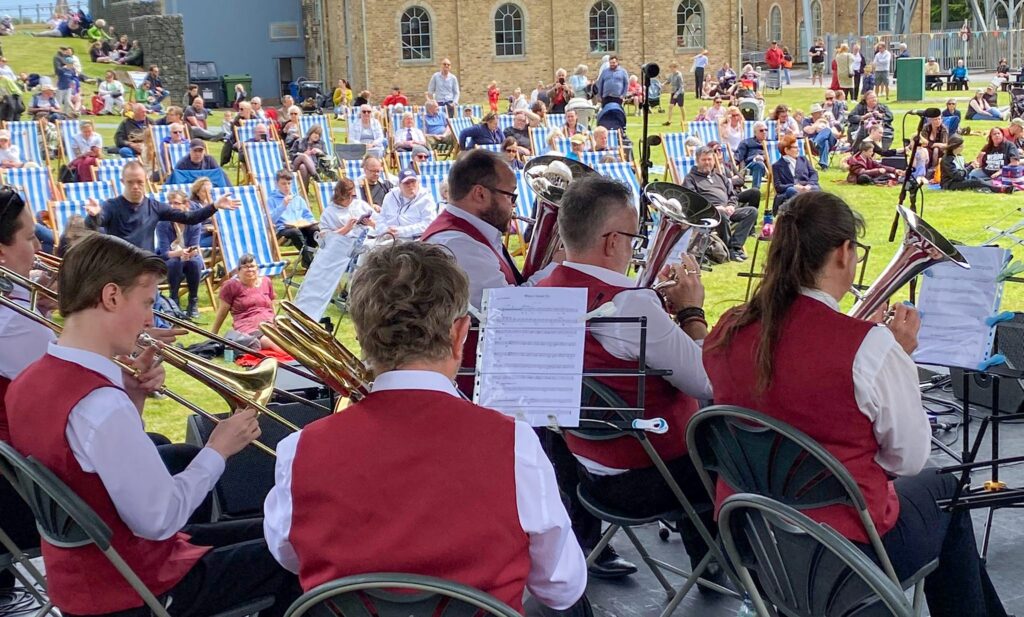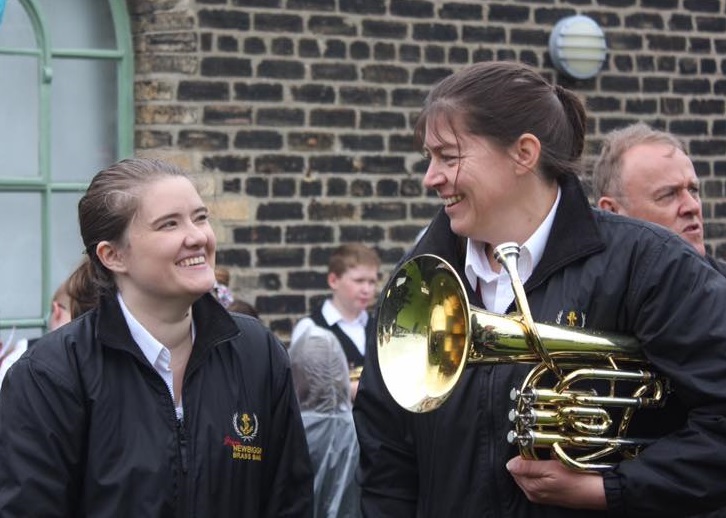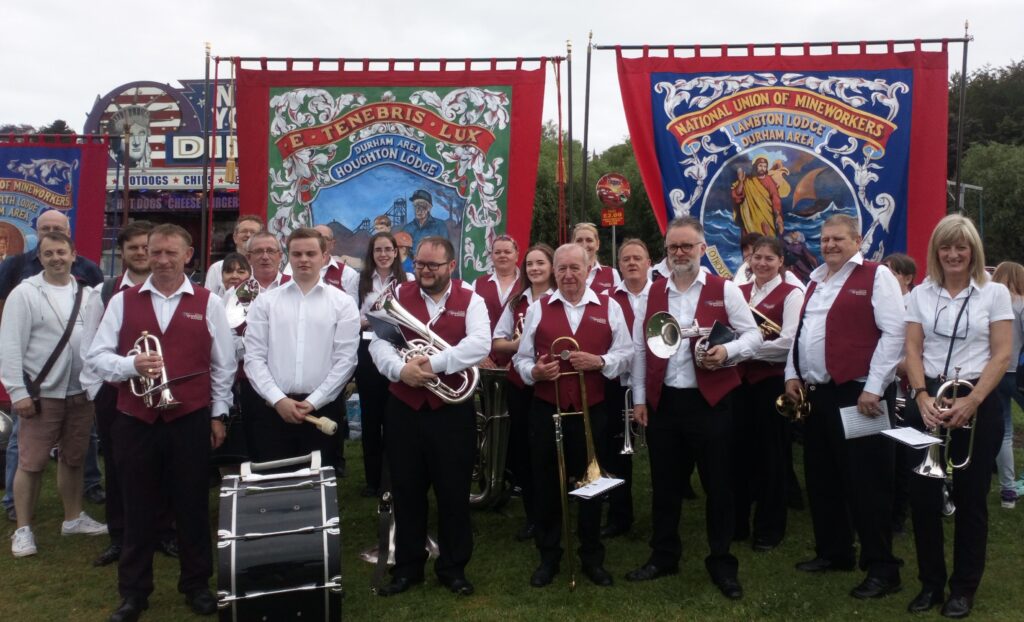A traditional brass band consists of brass instruments such as cornets, trombones, horns and basses, accompanied by percussion instruments like drums and cymbals.

Photo shows Jayess Newbiggin Brass Band at the National Championships in 2016, with 9 cornets, 2 percussion, 4 trombones, 3 tenor horns, 2 euphoniums, 2 baritone horns, musical director, E♭ bass and B♭ bass.
Brass bands have been an integral part of the cultural fabric of the UK for about 200 years, often formed in small communities and workplaces, providing entertainment, joy, and a sense of community. The oldest recorded community brass band is Stalybridge Old Band formed in 1809.
The repertoire of a traditional brass band is diverse and encompasses various genres, including classical, folk, jazz, and contemporary music. Often performing at local events, festivals, and competitions, brass bands never fail to entertain and impress with their skilful musicianship.
Photo shows Jayess Newbiggin Brass Band at Woodhorn Colliery Museum playing at the Northumberland Miners Picnic.

Contesting plays a big part in the life of a brass band. It provides an opportunity for bands to meet and compete to impress the judges. The fierce but friendly sense of competition motivates band members to ever better levels of performance and helps to create a strong sense of identity and bonds between band members.

Being part of a brass band like Jayess Newbiggin is not just about playing an instrument; it’s about belonging to a close-knit community. Band members often form lifelong friendships, sharing a passion for music and a sense of camaraderie. The band becomes a second family, united by their love for the art form and their dedication to excellence.
Photo shows Kirsty and Debbie at Woodhorn Colliery Museum.
Many brass bands have been passed down through generations, with children learning from, and joining, their parents and grandparents in the band.
Traditional brass bands also play a significant role in the social fabric of their local area. They bring people together, fostering a sense of unity and pride in the local community.
Their performances at local events, parades, and celebrations create an atmosphere of joy and celebration, leaving a lasting impact on both locals and visitors. For many they are a symbol of cultural heritage, community, and passion.
One of the biggest cultural events in the North East is the Durham Miners Gala, attended by 100,000s of people, with brass bands from all over the country leading the miners’ and other trade union banners through the streets of historic Durham City. As the day progresses, a real party atmosphere takes over!
Photo shows the band in front of miners’ banners at the gala.

Moreover, traditional brass bands provide a platform for aspiring musicians to develop their skills and showcase their talent. Many young musicians start their musical journey in these bands, receiving guidance and mentorship from experienced players.

This nurturing environment allows them to grow as musicians and contribute to the future of the tradition. Many will go onto to professional musical careers in a wide variety of settings.
Photo shows children learning to play the cornet or trumpet ahead of the annual Brass in Concert events.
Today brass bands, many of which started out as workplace bands based around collieries and other industries, have evolved to become much broader community bands welcoming players of all ages and from all backgrounds.
With entertaining, inspiring and moving performances and with dedication to the traditions, development and future of community music, brass bands continue to enrich the musical landscape, captivating audiences with the wonderful sound only a brass band can produce.
Photo of the band in conert at St Bartholomew’s Church, Newbiggin-by-the-Sea.

You can read more about traditional brass bands on wikipedia